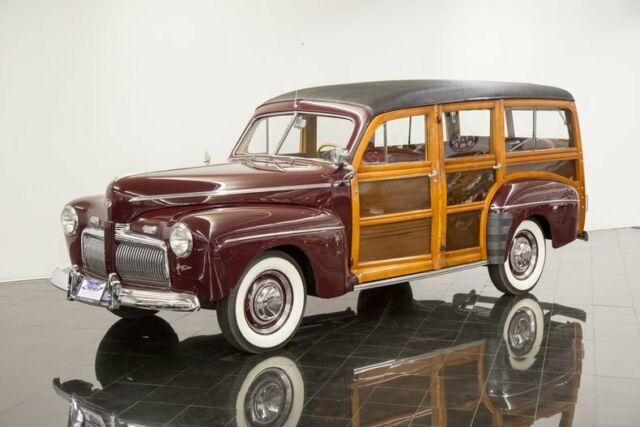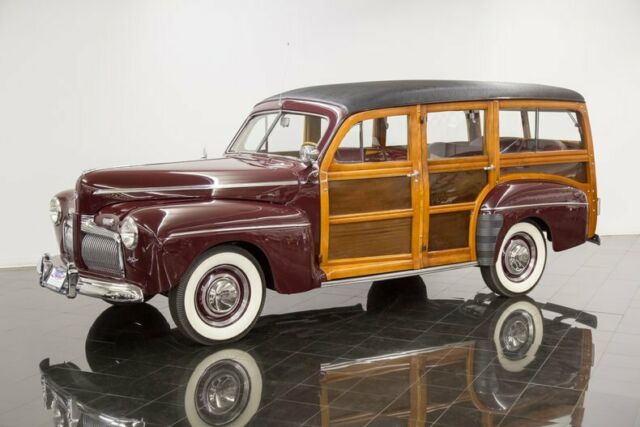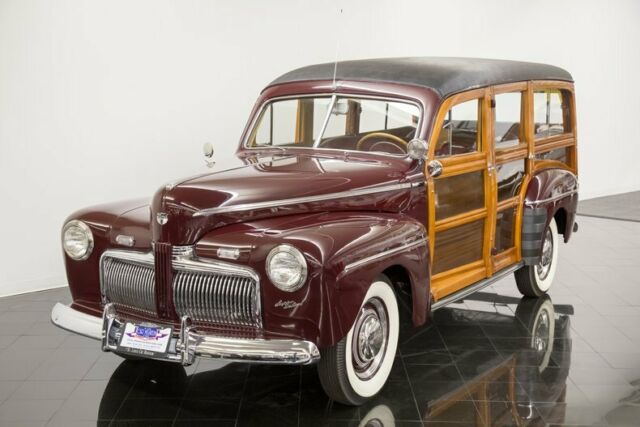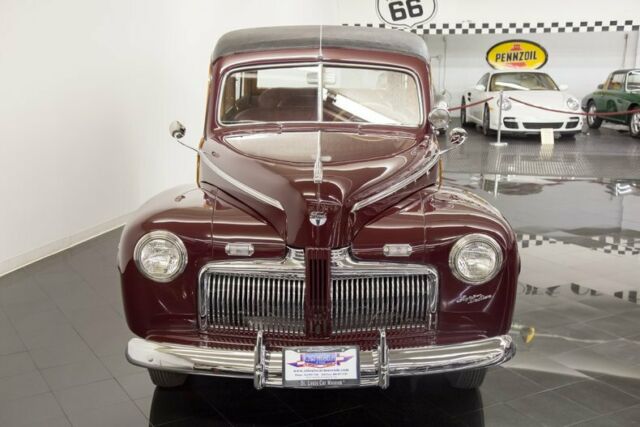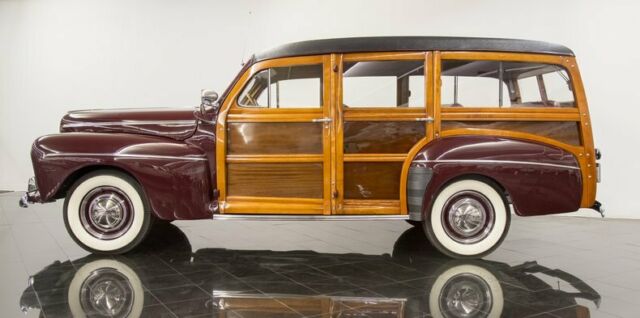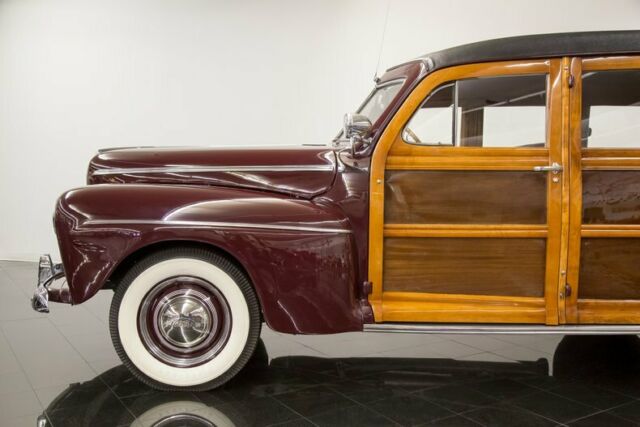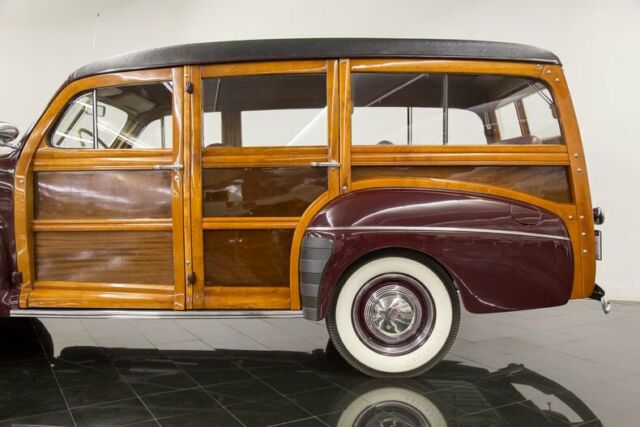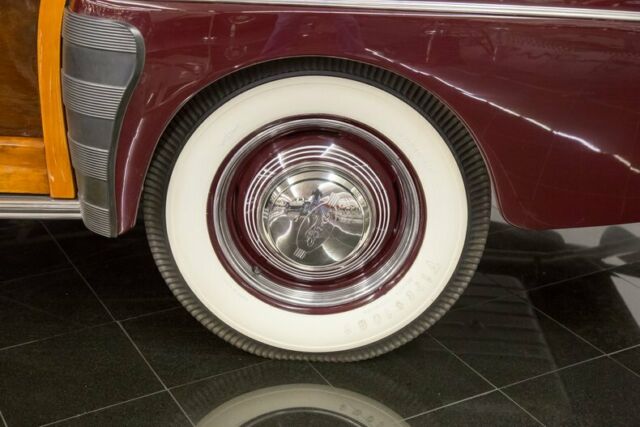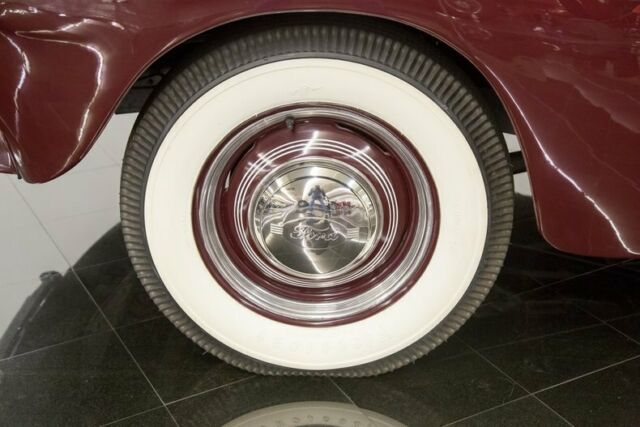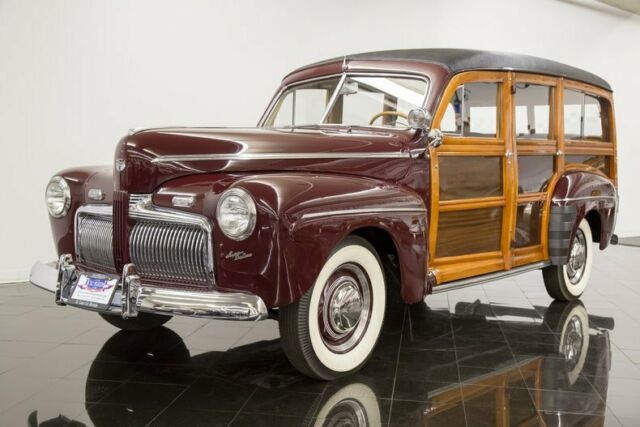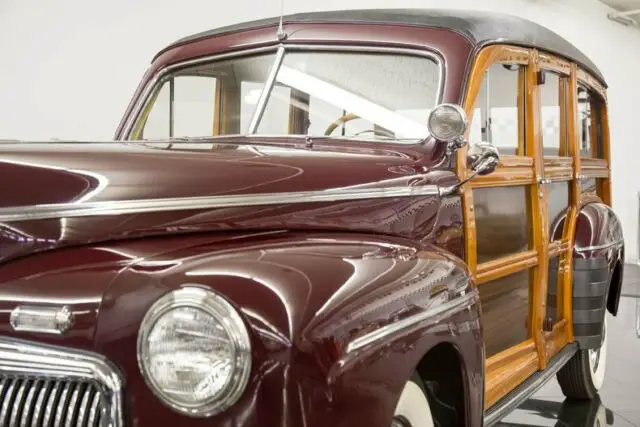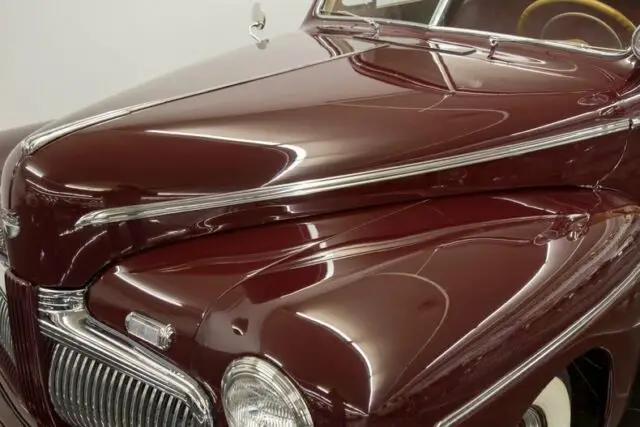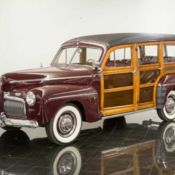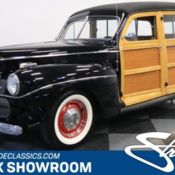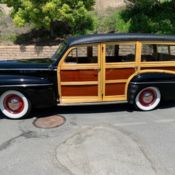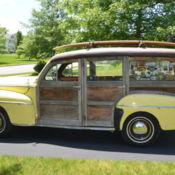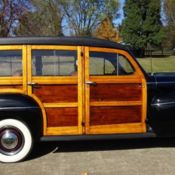|
Ford Motor Company had been in the wood-bodied station wagon business since the Model A was introduced in 1928. Not only involved in the complete production of the wooden framework, Henry Ford had purchased hundreds of thousands of acres of hardwood forest in Northern Michigan, which became known as Iron Mountain, in the early 1920's. This sawmill was already providing the wood necessary for building millions of Model T's, and the crates they were being shipped in all over the... country. Ford would to turn the Murray Corporation to finalize the assembly of the Ford Station Wagons, who would do so from 1928-1939. Although, Ford had Mengel Body based in Louisville, KY actually prepare the wood planks for Murray to use to build the bodies. Mengel was already the leader in wood production components for a number of American automobile manufactures, and had the craftsmanship to produce top quality parts for easier assembly. Unfortunately, this process lead to inefficiency between the three plants during production, not to mention some turbulence between Ford and Murray beginning in 1939. This would inspire Ford to move complete production of the planks and final assembly all in-house for 1940. They decided the very source of the wood would make for the perfect place to prepare it for ultimate assembly, the Iron Mountain plant itself. Given this extraordinary opportunity, the employees of Iron Mountain were eager to prove their worth. With soaring enthusiasm, they not only achieved production anticipations, executives at Ford found the efficiency and quality at Iron Mountain far surpassing expectations! It was quoted from the Ford News newsletter "No other automobile model requires in its manufacture the amount of experienced hand labor expended in the finishing of every hardwood Ford V8 Station Wagon. Here one finds hand craftsmanship raised to the highest level of efficiency." Unfortunately, this craftsmanship of restoring such a splendid vehicle has become a lost art today. So while just finding a surviving Woodie on the market is a challenge in itself, most have required some professional restoration along the way. We are very happy to offer this rare 1942 Ford Super Deluxe Woodie Station Wagon finished in Moselle Maroon over Dark Red interior upholstery! This example was stored for some 35 years in a basement garage, until gifted to the nephew in September 2002 as hopes of ever restoring were slipping away with years gone by. It would finally be moved from one garage to another in 2004, with a quest by the nephew to study the restoration cost, and opportunity. After gathering enough historical data over several years, he would finally commence the complete restoration in 2013 with the help of Schulze's Classic Car Restoration, LLC based in Silex, MO. The sympathetic restoration began with the intention of retaining as much originality as possible, and saving as much of the original wood framework as possible. All of the factory components were still fully intact, so the restoration consisted of only original equipment including all sheet metal. Excellent attention was giving to photo documenting this stunning Station Wagon from inception through restoration. Power comes from its original 221ci Flathead V8 and 3-speed column-shifted manual transmission, producing a factory rated 90 horsepower. Features include full dash instrumentation, Ford AM radio, dash clock, Stewart Warner South Wind heater/defrost system, front bumper guards, rear-mounted spare tire with Ford-scripted vinyl cover, safety glass, Firestone Deluxe Champion 6.00-16 wide whitewall tires, among other creature comforts. It would be difficult to cover the extensive amount of careful labor hours given to this special Woodie from 2013-2016, coming at a restoration cost of over $125,000! The engine was professionally overhauled by Flathead specialist Travis Wood of Precision Engine Rebuilder located in Wentzville, MO. This included boiling and magnafluxing the block & heads, resurfacing the heads, resized rods that were re-bushed & honed to fit, grinding crankshaft .010-.010, new crank gear, replacing the rear main seal oil slingers, new pistons & rings, pin bushings, main bearings, rod bearings, cam bearings, cam gear, new valves, exhaust valve seats, rebuilt connecting rods, and fresh gasket set. All new water pumps, boiled & repaired radiator, new radiator hoses, fuel pump, rebuilt starter & generator, and fan belt complete the outstanding running capacity! The body was carefully removed from the chassis to allow for a complete restoration of the suspension with rebuilt Houdaille shocks; all new braking system with fresh hoses, shoes, & cylinders; new exhaust system; and all new wiring from front to back. All exterior chrome was re-plated by Gateway Plating, new body welting installed on freshly painted steel body, and fully restored maple & birch hardwood body that were stained to very impressive color tones! New Super Deluxe emblems, lenses for the turn signals, parking lamps, and taillights bring an impressive finished result to the rarest of Ford Station Wagons! With 1942 production halted early with the United States entry to World War II, no Fords were built after February 10th, 1942. This example represents one of only 5,483 Super Deluxe Woodies built, and likely one of only a small percentage that remain intact today! Recent sales of such opportunities include the example from the Dingman Collection reaching a $176,000 sale result at the RM Auction in 2012. We feel this 4-owner example showing just 47,743 miles on the odometer is priced very aggressively for the serious Ford collector. Call with any questions, but act quickly!
|
 Home
Home Contact us
Contact us NEWEST CARS
NEWEST CARS SELL YOUR CAR
SELL YOUR CAR FAQ
FAQ